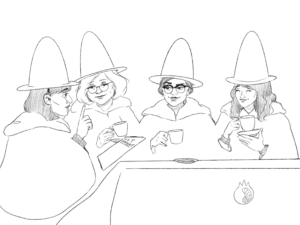From Ripley logging herself as the final survivor of the Nostromo to Suzy Bannion smiling as she walks away from the dance school that almost ended her, Final Girls have always held a special place in my heart. Their courage, intelligence, and survival skills stand out amongst many portrayals of women in media; portrayals that often leave women with little to do aside from being saved by a male hero. While she’s been a staple of horror since the rise of the slasher film, the Final Girl’s resurgence in contemporary horror and thriller movies is more important and necessary than ever.
But I’m getting ahead of myself. If you’re not a huge movie nerd like yours truly or you’re unfamiliar with film studies jargon, this might be the first time you’re seeing the term “Final Girl,” but I can guarantee that you’ve met her before. Coined in Carol J. Clover’s 1989 essay Her Body, Himself: Gender in the Slasher Film, the Final Girl trope generally refers to the badass ladies of slashers who fight their way to the end of the film. Usually tomboyish in nature (even sometimes in name, like Marti from Hell Night, or Laurie from Halloween) she uses her investigative prowess and levelheadedness to make it through the film’s ordeals. She is the last one standing before the credits roll.

Clover’s essay zeroes in on heroines of slasher films like A Nightmare on Elm Street and The Texas Chainsaw Massacre, but Final Girls can be found in other horror and thriller films, too. The ladies I mentioned at the top of this essay (from Alien and Suspiria, respectively), both star in movies that aren’t exactly slashers, but they still share the qualities of their sisters in bloodier films. The flexibility of the Final Girl archetype has helped her stick around, giving her a fluid and yet timeless presence.
Take, for instance, Sidney Prescott, the protagonist of Scream. She’s definitely a Final Girl who ends up duking it out with Ghostface to the very end. However, she also subverts what it means to be a classic Final Girl in a very big way — she’s had sex with the killer. While most aspects of the Final Girl trope are pretty cool, the traditional definition of an FG has some gross qualifiers built in — for example, the heroine that stays away from sex is “rewarded” by surviving while the other ladies of the film who’ve had sex are sentenced to death. Sidney is a great subversion of this grossly sexist conundrum — she has sex and isn’t punished for it, and in fact maintains her kickass FG status throughout the film.

Defining traits aside, the Final Girl can’t (and shouldn’t) be pinned down. Like the ladies that look up to her, she contains multitudes; while forging through obstacles with levelheadedness and sheer determination, she is also forced to face her vulnerable side through the losses she inevitably takes along the way.
The multi-dimensional nature of the Final Girl has given her a permanent place in pop culture. Recently, she’s been making something of a comeback. Films like The Witch, 10 Cloverfield Lane, and (most recently) Don’t Breathe all bring new and empowering additions to the Final Girl pantheon. Survival, whether it’s against a suffocating familial presence, a delusional killer, or a terrifying captor, is crucial in all three films. The ladies at the helm of these recent movies not only survive — they kick ass.

Given our current political climate, the Final Girl’s presence is especially significant. In an election year where a presidential candidate has demeaned, endorsed sexual assault against, and been generally shitty towards women, we can find some vicarious comfort in the Final Girl literally slicing and dicing her way through the patriarchy. With someone as vile as Donald Trump (who could give even Freddy a run for his money in the nightmare department) running for president, it’s therapeutic to see a woman fight back against her captors — who are more often than not monstrous men (see Don’t Breathe, 10 Cloverfield Lane, and even Hush). Sound familiar?
While she’s already served as an inspirational symbol for women since her inception, the future of the Final Girl holds even more promise. Increasingly, women’s representations in film are being re-examined and reevaluated. What better way to work on nuanced representation than the Final Girl?
For a horror loving Tejana like myself, and for women of color everywhere who love horror movies, seeing some diversity in the Final Girl pantheon would be a gift. Because seeing more girls like myself fighting against aliens, murderers, and paranormal entities until the very end would be an even bigger reason to celebrate them. The resilience and courage of the Final Girl has been something that’s inspired me since I watched my first slasher film. When I need to find my own strength to face the (admittedly less deadly) challenges in my life, it’s comforting to have a source of inspiration as radiant as the FG. I may not be fighting killers, captors, or supernatural beings day-to-day but when I need a boost of badassery to get me through the day I take a deep breath and ask myself, “What would Ripley do?”




